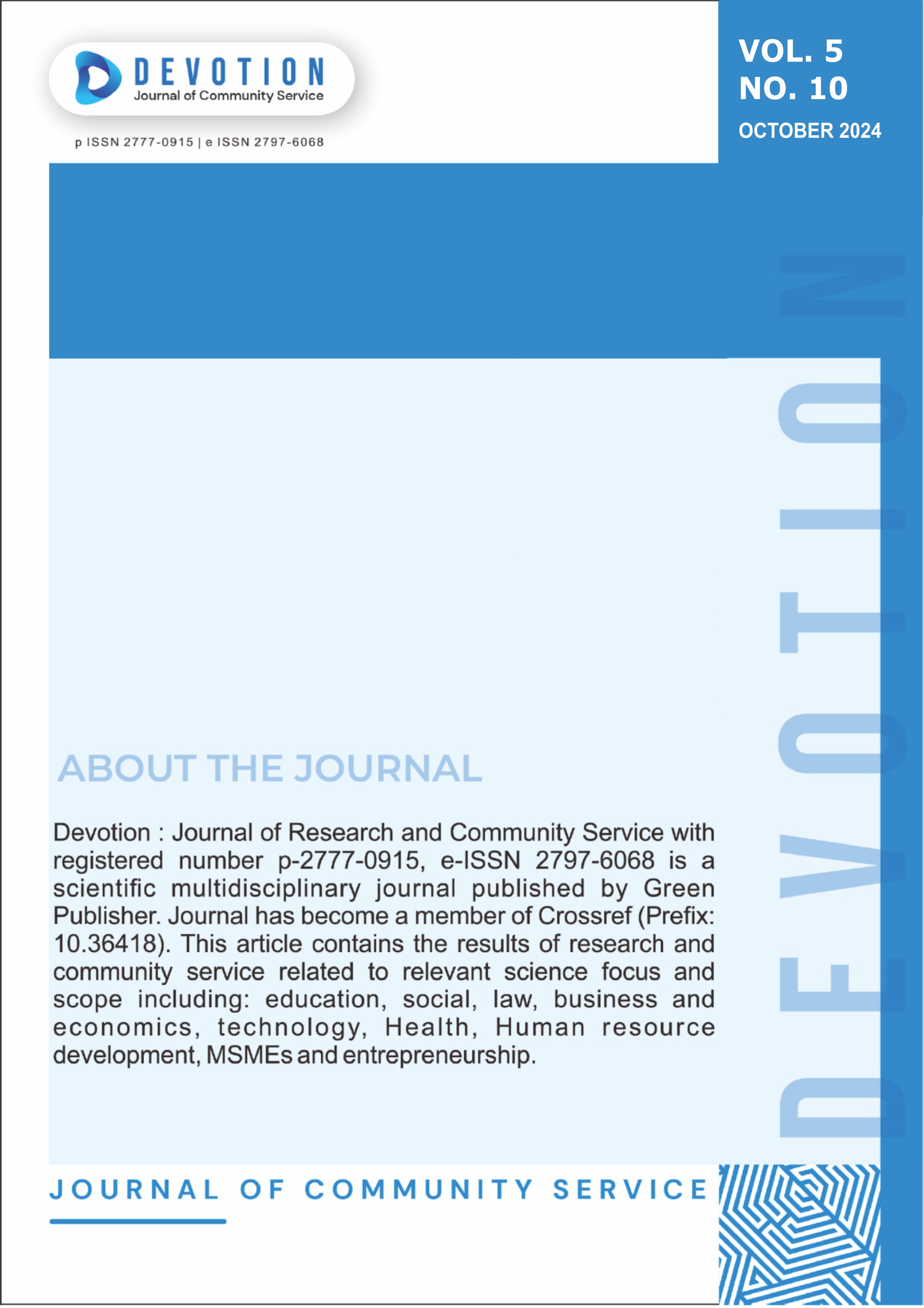Using Deep Learning and Cbir To Address Copyright Concerns of AI-Generated Art: A Systematic Literature Review
DOI:
https://doi.org/10.59188/devotion.v5i10.18642Abstract
This systematic literature review explores the intersection of deep learning and content-based image retrieval (CBIR) in addressing copyright concerns related to AI-generated art. As artificial intelligence rapidly transforms various artistic domains, it raises critical questions regarding authorship, ownership, and the ethical implications of machine-generated creativity. The review examines the capabilities of CBIR systems in identifying AI-generated images by analyzing visual features such as color, texture, and shape. Additionally, it highlights the role of deep learning models in enhancing the accuracy of these systems through the detection of distinctive patterns characteristic of AI artworks. The findings underscore the importance of developing robust methodologies that leverage AI and CBIR technologies to protect intellectual property rights while fostering innovation in the creative industries. This research contributes to the broader discourse on the legal and ethical challenges posed by AI in art, providing insights for policymakers, artists, and technologists in navigating the evolving landscape of AI-generated content.
Downloads
Published
Issue
Section
License
Copyright (c) 2024 William Vivaldi, Indrajani Sutedja

This work is licensed under a Creative Commons Attribution-ShareAlike 4.0 International License.
Authors who publish with this journal agree to the following terms:
- Authors retain copyright and grant the journal right of first publication with the work simultaneously licensed under a Creative Commons Attribution-ShareAlike 4.0 International. that allows others to share the work with an acknowledgement of the work's authorship and initial publication in this journal.
- Authors are able to enter into separate, additional contractual arrangements for the non-exclusive distribution of the journal's published version of the work (e.g., post it to an institutional repository or publish it in a book), with an acknowledgement of its initial publication in this journal.
- Authors are permitted and encouraged to post their work online (e.g., in institutional repositories or on their website) prior to and during the submission process, as it can lead to productive exchanges, as well as earlier and greater citation of published work.













